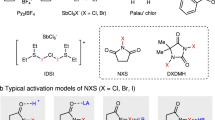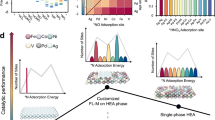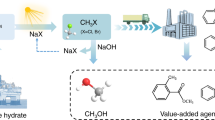Abstract
ABNORMALLY high cation exchange capacities (40–70 m.equiv./100 gm.) have been reported for halloysite1. Since isomorphous substitution is of inconsiderable magnitude in halloysite, White2 has suggested that allophane, which sometimes is associated with halloysite, may account for these large values. The recent work of Wada3, however, shows that salts of potassium and ammonium can replace H2O from between the layers of hydrated halloysite and form heat-stable complexes with the clay. The amount of salt so held is large (200–300 m.equiv./100 gm.).
This is a preview of subscription content, access via your institution
Access options
Subscribe to this journal
Receive 51 print issues and online access
$199.00 per year
only $3.90 per issue
Buy this article
- Purchase on SpringerLink
- Instant access to full article PDF
Prices may be subject to local taxes which are calculated during checkout
Similar content being viewed by others
References
Grim, R. E., “Clay Mineralogy” (McGraw-Hill, New York, 1953). Kerr, P. F., et al., Amer. Petrol. Inst. Research Proj. 49, Prelim. Rep. 7, 91 (1951).
White, W. A., Amer. Mineral., 38, 634 (1953).
Wada, K., Amer. Mineral., 44, 153 (1959).
Author information
Authors and Affiliations
Rights and permissions
About this article
Cite this article
THOMAS, G. Salt Desorption from Halloysite. Nature 184, 1746 (1959). https://doi.org/10.1038/1841746b0
Issue date:
DOI: https://doi.org/10.1038/1841746b0



